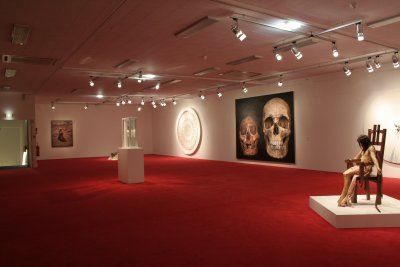The diagonal of May 25, 1963
1963
Red fluorescent light
244 x 10.5 x 11 cm (96 1/16 x 4 1/8 x 4 5/16 in.)
A red diagonal crosses the wall, changes the perception of space and engages the viewer's gaze. Combining industrial aesthetics, a sensuous material and intense light, it radiates an energy that generates, in the words of Donald Judd, a “particular visual state”.
The Diagonal of May 25, 1963 is a turning point in Dan Flavin's oeuvre. Also titled The Diagonal of Personal Ecstasy, it marks the start of Flavin's systematic use of appliances and tube lights purchased off the shelf. By turning an everyday object into a work of art and transforming the space, the artist became a leading figure of American Minimalism, which he defined as follows: “I like art as thought better than art as work. I've always maintained this. It's important to me that I don't get my hands dirty. It's not because I'm instinctively lazy. It's a declaration: art is thought.”
Held in the Pinault Collection, The Diagonal of May 25, 1963 was first shown in 2006 at the Where Are We Going? exhibition at Palazzo Grassi, in Venice.
The Diagonal of May 25, 1963 is a turning point in Dan Flavin's oeuvre. Also titled The Diagonal of Personal Ecstasy, it marks the start of Flavin's systematic use of appliances and tube lights purchased off the shelf. By turning an everyday object into a work of art and transforming the space, the artist became a leading figure of American Minimalism, which he defined as follows: “I like art as thought better than art as work. I've always maintained this. It's important to me that I don't get my hands dirty. It's not because I'm instinctively lazy. It's a declaration: art is thought.”
Held in the Pinault Collection, The Diagonal of May 25, 1963 was first shown in 2006 at the Where Are We Going? exhibition at Palazzo Grassi, in Venice.
Exhibitions

Dan FLAVIN © Adagp, Paris.





